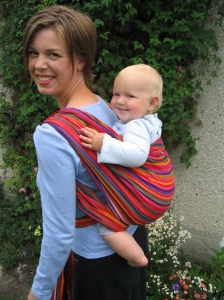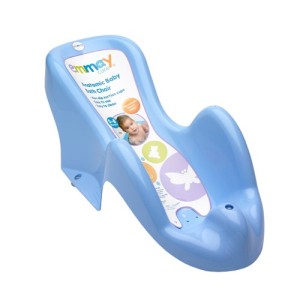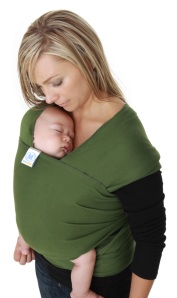Babies seem like quite complicated little creatures don’t they?
There are a lot of gadgets, gizmos and bits of equipment out there designed to help babies become little genius’ and make your life easier.
The chances are though that you probably won’t use most of them and they can cost a lot of money.
As as a children’s occupational therapist and a mum of two I’m coming at this from two perspectives – developmental and making my life a bit easier.
Babies, especially newborns are actually quite simple. They have come out of a warm womb but contrary to popular belief is probably not the peaceful haven we are led to believe. It is noisy, both internally and externally, constantly moving, swaying, jiggling and getting tighter all the time. The foetus is unlikely to feel hunger, extremes of temperature or experience digestive discomfort; although these are all very strong drivers of distress in the newborn. It is generally agreed that other than the basic care needs such as feeding, nappy changing, checking for illness etc, it is repetitive rhythmic movements, deep pressure and “white” noise brings the newborn baby comfort (NHS Choices 2013) . From an OT point of view the deep pressure and rhythmic movements help the baby organise sensory input (Ayres et al 2005) which gives them a great foundation for the rest of their development. All the theory is very interesting but how do you actually put it into practice to make your life easier and start your baby on the right track?
These are my top four bits of kit that I would recommend to any new parents.
1) Swaddling
Newborn babies usually love to be swaddled. It helps dampen the startle reflex and gives them deep proprioceptive (information from their joints and muscles) input which is very soothing. Swaddling is a technique to try with only the very young baby (up to about 6 weeks) without any health problems.
2) Your birthing ball
Birthing balls are great for sitting on and gently bouncing with your new baby. Babies love the rhythmic and repetitive movement and will often drop off to sleep.
3) An anatomical bathseat
Bathing tiny babies can be rather tricky. They are very slippery when wet and as part of the theme you have probably noticed, they like the sensory input of having clothes on. Getting them undressed generally makes them very cross and the knock on effect can be a very stressful bath time. An anatomical shaped bath seat can help by increasing proprioceptive input and providing a stable base of support that doesn’t wobble when the baby kicks it’s legs.
4) A close fitting baby carrier/ sling
A baby wrap is basically a massive piece of thick t-shirt type material that you tie in a a way that you can “wear” your baby. The baby is close to the body, tight in the wrap. New babies should always be placed tummy to your tummy in the sling and as an OT I would recommend they are always placed facing your body until they are old enough to be carried in the wrap or sling on your back (like a piggyback  ). This provides a comforting position for the baby with deep proprioceptive input, vestibular input from the rhythmic movement of the carer walking and should be able to turn it’s head away from any visual stimulus. It also works with the natural anatomical position of the baby and can help prevent plagiocephaly (flat head). For the parent/ carer the baby carrier provides an opportunity to have their hands free to do activities that can be difficult to do when pushing a pram or holding the baby in arms.
). This provides a comforting position for the baby with deep proprioceptive input, vestibular input from the rhythmic movement of the carer walking and should be able to turn it’s head away from any visual stimulus. It also works with the natural anatomical position of the baby and can help prevent plagiocephaly (flat head). For the parent/ carer the baby carrier provides an opportunity to have their hands free to do activities that can be difficult to do when pushing a pram or holding the baby in arms.
Obviously, there are a million other bits and bobs that you may find just as invaluable, please feel free to leave me a comment and let me know what they are.
Love
Sparkle Occupational Therapy x



![18_int_comforting [Converted]](https://sparkleoccupationaltherapy.files.wordpress.com/2013/09/swaddle1.jpg?w=300&h=198)
![65cm-birthing-ball-by-birth-supplies-416-p[ekm]288x279[ekm]](https://sparkleoccupationaltherapy.files.wordpress.com/2013/09/65cm-birthing-ball-by-birth-supplies-416-pekm288x279ekm.jpg?w=825)


